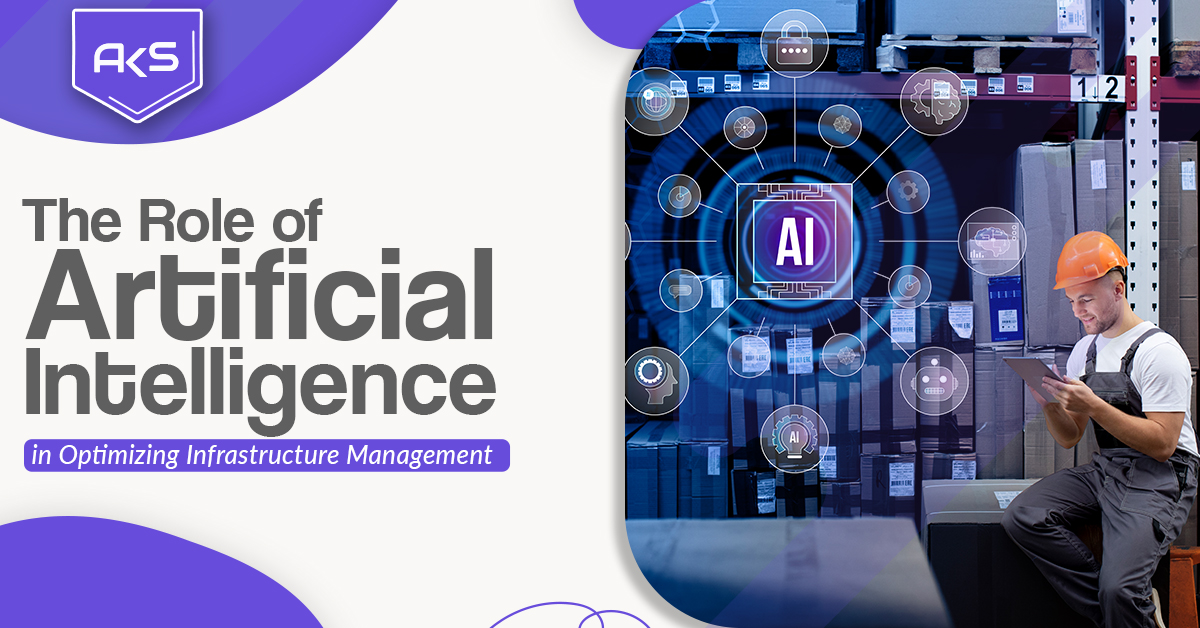
The Role of Artificial Intelligence in Optimizing Infrastructure Management
- By Admin
- 23-02-2024

In today’s rapidly evolving world, the management and
maintenance of critical infrastructure such as roads, bridges, and buildings
have become increasingly complex. The integration of artificial intelligence
(AI) has revolutionized infrastructure management, offering innovative
solutions that optimize operations, enhance safety, and reduce costs. This blog
aims to delve into the pivotal role of AI in optimizing infrastructure
management.
Asset Maintenance and
Predictive Analytics
One of the primary roles of AI in infrastructure management
is predictive maintenance. By analyzing data from various sensors and
historical maintenance records, AI algorithms can predict equipment failures
and maintenance needs. This proactive approach helps in minimizing downtime,
reducing the risk of catastrophic failures, and ultimately extending the
lifespan of critical infrastructure assets.
Efficient Resource
Allocation
AI plays a significant role in optimizing the allocation of
resources for infrastructure management. By processing vast amounts of data
related to traffic patterns, usage statistics, and environmental conditions, AI
can determine the most efficient allocation of manpower, materials, and
equipment. This leads to cost savings and ensures that resources are utilized
in a manner that maximizes their impact.
Real-Time Monitoring
and Management
The real-time monitoring of infrastructure is made possible
through AI-powered systems. These systems can continuously collect and analyze
data from various sources, such as IoT sensors and satellite imagery, to
monitor the condition of bridges, roads, and other critical assets. By
detecting anomalies and identifying potential issues in real time, AI enables
swift intervention, thus preventing minor issues from escalating into major
concerns.
Enhanced Safety and
Risk Management
AI has proven to be invaluable in enhancing safety and risk
management in infrastructure operations. Through the analysis of historical
data and real-time inputs, AI can identify potential safety hazards and predict
failure points in infrastructure. This proactive risk management approach is
instrumental in preventing accidents and ensuring the overall safety and
reliability of critical infrastructure.
Automated
Decision-Making Processes
The use of AI enables the automation of decision-making
processes in infrastructure management. AI algorithms can process vast amounts
of data to make informed decisions related to maintenance schedules, resource
allocation, and risk mitigation strategies. This automation not only saves time
but also ensures that decisions are based on comprehensive analysis, leading to
optimized outcomes.
Challenges and
Considerations
While the role of AI in optimizing infrastructure management
is clear, there are several challenges and considerations that must be
addressed. These include data privacy and security concerns, the need for
skilled AI professionals, and the ethical implications of AI-driven
decision-making.
As AI continues to advance, its role in infrastructure
management will become even more pivotal. However, it is essential for industry
stakeholders to invest in robust data infrastructure, cybersecurity measures,
and the training of personnel to leverage the full potential of AI in
optimizing infrastructure management. Additionally, collaboration between
public and private sectors will be crucial in driving the adoption of AI
technologies for the benefit of society as a whole.
In conclusion,
the role of artificial intelligence in optimizing infrastructure management is
multifaceted and transformative. From predictive maintenance to real-time
monitoring and automated decision-making, AI offers a range of solutions that
enhance the efficiency, safety, and longevity of critical infrastructure. By
embracing AI technologies and addressing associated challenges, the future of
infrastructure management holds great promise for more resilient, sustainable,
and intelligent systems.




